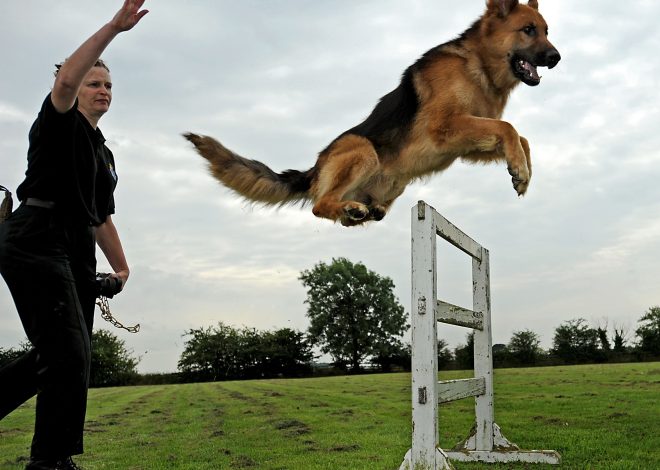Pets
Health & Happiness: Common Concerns and Care for Large Dog Breeds
Welcoming a large dog into your home brings immense joy, companionship, and often, a gentle giant full of love. However, owners of Large Dog Breeds must be aware of specific health considerations and care requirements that differ significantly from those of smaller canines. Their substantial size, rapid growth rates, and unique physiological structures predispose them to certain conditions. Understanding these common concerns and implementing preventative care strategies is essential for ensuring your big friend lives a long, healthy, and happy life by your side.
Joint Health and Mobility
One of the most prevalent concerns for large dogs revolves around their joints. Conditions like hip and elbow dysplasia are unfortunately common, where the joints don’t develop properly, leading to arthritis and pain. Patellar luxation and osteochondritis dissecans (OCD) can also occur. Proper nutrition during puppyhood, controlled exercise that avoids excessive strain on growing joints, and maintaining a healthy weight are crucial preventative measures. Regular veterinary check-ups and early detection of symptoms can lead to interventions like physical therapy or medication to manage pain and improve mobility.
Gastric Dilatation-Volvulus
Gastric Dilatation-Volvulus, commonly known as bloat, is an acute and life-threatening condition that disproportionately affects deep-chested Large Dog Breeds. It occurs when the stomach fills with gas and twists, cutting off blood supply. Symptoms include restlessness, unproductive retching, a distended abdomen, and distress.
Cardiovascular Considerations

Certain large breeds are predisposed to specific heart conditions. Dilated cardiomyopathy (DCM) is a serious concern in breeds like Doberman Pinschers, Great Danes, and Irish Wolfhounds, where the heart muscle becomes thin and weak, leading to inefficient pumping.
Nutrition for Growth and Maintenance
The nutritional needs of large breed puppies and adults are distinct. Puppies require a diet formulated for large breeds to ensure slow and steady growth, preventing rapid bone development that can exacerbate joint issues.
Exercise and Mental Stimulation
Despite their size, not all large breeds require extensive, high-impact exercise. Over-exercising a growing large breed puppy can damage developing joints. Moderate, consistent exercise appropriate for their age and breed is key. Mental stimulation is equally important; large dogs are intelligent and benefit from training, puzzle toys, and interactive play to prevent boredom and destructive behaviours.
In conclusion, caring for Large Dog Breeds involves a proactive and informed approach to their specific health vulnerabilities. By understanding common concerns like joint issues, bloat, and heart conditions, and by implementing preventative strategies related to nutrition, exercise, and regular veterinary care, owners can ensure their beloved giants enjoy a life full of comfort, activity, and boundless happiness.
Your Dog’s Sleeping Habits And What It Tells You
Understanding your dog’s sleeping habits is very important as a pet owner. This will help ensure that you care for their overall well-being as sleep can affect their happiness. Dogs have very unique sleep patterns.
This can be greatly affected by their breed, age, health, and their living environment. There are different pet blog and articles online that you can read to better understand this. And if you want to understand your dog’s sleep habits, then this article is for you.

Understanding Dog’s Sleep Duration and Patterns
As part of your care and routine, it is crucial that you understand your dog’s sleep duration and its patterns. Each dog will have a different sleep pattern depending on several factors. Here’s the common sleep duration for dogs.
- Puppies. They sleep up to 18 to 20 hours a day as they need it more to grow.
- Senior Dogs. They sleep 16 to 18 hours on average because of the changes in their pattern due to age.
- Active Dogs. They sleep less, around 12 to 14 hours as they adjust their sleep duration and pattern to their energy levels.
Common Dog Sleep Positions
If you have dogs you will notice that they have different sleep positions. And each of these shows different levels of comfort or vulnerability. Here are signs that your dog is comfortable in their sleep:
- Curling up
- Stretching out on their side or back
- “Superhero” pose – legs stretched out behind their bodies

Signs That Dog Is Uncomfortable
If your dog shows different sleeping positions, then this might indicate that they are not comfortable. These actions may mean that your dog is experiencing discomfort while sleeping. And if they are showing signs that they are in pain that changes their sleeping habits, they should be brought to the vet as soon as possible. Here are the signs that your dog is not comfortably sleeping:
- Restlessness
- Frequent shifting or changing locations
- Excessive licking or scratching
- Tense body posture
- Whining
How Environment Affects Your Dog’s Sleep
The environment or condition in which your dog sleeps may affect how well-rested they are. Make sure that you provide them with a comfortable place to sleep with as little disturbance as possible. Prepare bedding that offers adequate support that will keep them warm and comfortable. Also, make sure that the bed is the right size for your dog.
It is very important that you have a good understanding of your dog’s sleeping habits and patterns. This can tell a lot about their health. Make sure that you are observant of their sleeping patterns and if they are getting enough rest or not.


